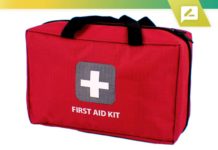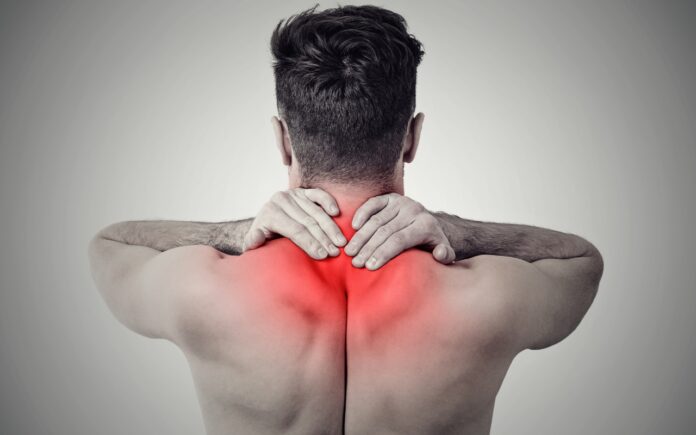If you've experienced upper back pain between the shoulder blades, commonly referred to as interscapular discomfort, you're aware of how unpleasant it can be.
This is becoming a regular occurrence, especially because of the growing usage of smartphones, laptops and tablets. Using these devices can lead to an ineffective posture loss of flexibility tension and pain.
In this article, we'll discuss the most frequent conditions and treatment options you can research in your home.
Table Of Contents:
- What is it, and what does it feel like?
- The causes of shoulder pain are mainly between shoulder blades
- 8 Ways To Alleviate Pain
What Is Pain Between Shoulders Blades? (What does it feel like?)
The upper back pain that occurs between the shoulder blades is present on one either side of the body. It could appear to be either acute (meaning it is a pain that persists for only a short period of period of time) and chronic (meaning that the pain continues for months or weeks). The following symptoms could accompany it:
- A brief, sharp burst of discomfort (spasm)
- Achy, numbing pain that lasts
- A burning pain
- It is painful is felt when you breathe deeply
- The pain is localized to the region between the shoulder blades or that radiates into your arms or other parts in your back.
Main Areas You May Feel Pain In:
– Shoulder Blades
– Neck
– Shoulders
– Arm/s
Main Muscles affected include:
– Rhomboids
– Upper Trapezius
– Levator Scapula
– Scalenes
– Rotator Cuff muscles
– Latissimus Dorsi
– – And many others
Notes Notes: It's important to remember that the discomfort you feel in and around your shoulder blades could be caused by your neck. Most likely, you'll need to focus on both the shoulder and neck regions. [
Common Causes of Back Pain Between Shoulders Blades:
Utilizing the Smart Phone & Computer For prolonged durations of time
- The use of computers and smartphones can result in an insufficient posture for the neck and shoulder and can result in discomfort and tightness in shoulder blades and shoulders.
- The muscles in the shoulder blades and neck are strained by excessive use in computer work.
Psychologic/Psychosocial Stress
- The severity of psychologic distress in high levels was related to lower back and shoulder pain.
- Stress during work increases the activation of muscles in the upper Trapezius Muscle (A muscle that is located in the back of your upper torso).
Poor Posture (Slouched Posture)
- A forward-facing head posture as well as rounded shoulders can cause discomfort in the shoulder and upper back blades.
- The act of sitting in front of a computer in a bad posture could cause pain in the shoulder region.
- Certain muscles could be overused, while other muscles aren't being utilized enough which can lead to poor posture.
Shoulder Injuries or Syndromes
The shoulder joint as well as the scapula (Shoulder blades) are dependent on the other, which means that any of these conditions may cause pain or dysfunction:
– Subacromial impingement syndrome
Tendinopathy of the rotator cuff.
Instability in the shoulder.
Alternate Scapula Motion and Position (Scapular dyskinesis)
- This refers to the way the shoulder blade (aka Scapula) moves and rests on your ribcage.
- There may be a connection between tightness or weakness in the muscles surrounding the shoulder blades, and shoulder pain and dysfunctions.
Scapular Winging
- This happens when shoulder blades are pushed out and aren't appropriately seated on the ribcage.
- The condition can cause discomfort and tightness around the shoulder blades.
- It can be caused by an injury to muscles in the serratus anterior.
Disc Herniation In Neck
- A bulging or herniated disc within the neck could cause pain in the shoulder blades region.
- Common symptoms are numbness, tenderness, or discomfort in both arms.
Arthritis/Degenerative Changes
- Degenerative changes to the upper back and neck could cause pain that is experienced between shoulder blades.
Other Causes Can Include:
- Carrying a Backpack
- Lifting heavy objects
- Sports Injury
- Trauma
- Fracture
- Osteoporosis
- Ankylosing Spondylitis
- And More
In the rest of this piece we'll focus on the muscular instabilities and bad postures as the root causes of your back pain between the shoulder blades and the steps you can take to alleviate the symptoms.
Your Upper Back & Neck Posture Is Crucial
Given that muscles imbalances and poor posture could be the result of working at a computer or looking at smartphones, let's look at the consequences of sitting in this situation and, typically it's this:
- Your head will protrude towards the forward (aka forward Head Position)
- Your shoulders will move forward (aka Shoulders that are rounded Shoulders)
- Increased Kyphosis (The curvature of your spine's upper part will be bent inwards)
As time passes, this unnatural posture can result in some ligaments and muscles becoming overused (overactive) while other ligaments and muscles are under-used (underactive/weak) The result can cause pain.
8 Ways to Alleviate Pain In Upper Back & Shoulder Blades:
Notes:
There are many methods to relieve shoulder blade pain and our aim was to present you with strategies for short-term and long-term relief.
The three methods below will focus on providing you with temporary relief through self-massage techniques as well as stretching for the areas that are actually painful.
4-8 will be focused in stretching, and reactivating muscles to help you to keep yourself in more upright posture. This is the long-term strategy.
If your pain persists for a prolonged period, you can consult a doctor in person to resolve your issue.
1. Trigger point release between the shoulder blades (Using the massage ball)
How can it help:
The first thing to do is release those trigger point that could be forming in or between your shoulder blades. With the massage ball, you can identify a tender area and apply pressure to the exact location where you notice discomfort.
How to go about it:
- Lay down on your back and begin lying down.
- A massage ball should be placed between shoulder blades
- When you have found a comfortable place, you can simply keep the ball there and then apply pressure using the weight of your body.
- Place the pressure on the area for at least 30 seconds (Don't move back and back and forth)
- Find the next location and repeat the procedure.
2. Trigger point therapy with self Massage Tool for upper back and shoulders.
What can it do to help:
A manual trigger point massager will pinpoint trigger points on your shoulder and upper back blades.
How to go about it:
- From a standing position place the hook on your shoulder, ensuring that it is in a narrow region
- The left arm should be pushed slightly toward the back to apply pressure on the area
- Continue to apply tension until the trigger points release. Minimum 30 seconds in one place.
- Move your muscles around the scapula and apply pressure to trigger points in other areas.
- Apply this release to all areas of tenderness in the vicinity.
3. Shoulder Blade Stretch
How can it help:
After a few self-massages, it is time to begin stretching the deltoids and rhomboid areas. This will help release tension in the area.
How to go about it:
- Place left elbow over right elbow
- Then, take your left hand and wrap it to the right arm.
- In this position, you can press harder to get your lower back open.
- Maintain the position at the end for 20-30 seconds.
- Repeat on the other side.
4. Upper Trapezius Stretch
This can stretch the neck and the upper back muscles (Scalene and Upper Trapezius) which can be very tight for those with this neck condition.
- Start either sitting or standing in a seated or standing.
- Put one of your hands to the other side of your face. put the other one behind your back.
- Now, you can bring your head towards your shoulder.
- Use your hand at the top to press your head back down to stretch your head further (Not too much).
- Keep it for 20-30 seconds and then do both sides.
5. Door frame stretch
How can it help:
This stretch assists in releasing the tight muscles in your chest that could cause poor posture and shoulder pain. Stretching the pectoralis minor and major muscles is crucial to helping bring your back to the correct posture.
How to accomplish it:
- Begin by placing two arms on each side of the door frame at an angle of 90 degrees
- Then, step forward through the door on one leg, and apply the pressure
- Be careful not to put your head forward or arched your lower back
- Keep this stretch in place for 30 seconds
- Make sure you do three repetitions of this stretch.
6. Levator Scapulae Stretch (Neck Release)
How can it help:
The exercise will stretch and relax the muscle Levator Scapulae that connects the neck to the shoulder blade. This muscle tends to get very tight and can cause tension and pain around the shoulder blades.
How to accomplish it:
- Begin by sitting down in a chair that is in an upright position.
- The right arm should be placed on the back of your head.
- Now, tilt you head left (Towards the right shoulder)
- Then lower your head and look downwards at the armpit.
- You can also increase the stretch by placing your hands over the the top.
- Keep this stretch going for 20-30 minutes.
- Switch sides and repeat the stretch on the left side.
7. Scapular Retraction (Using Resistance Bands)
How can it help:
This exercise can help strengthen the muscles between your shoulder blades and on the shoulders' back, eventually allowing you to be strong enough to maintain the correct posture.
How to go about it:
- Start standing up with a great posture
- In the grip of a resistance band (level of resistance is dependent on your personal strength level) using both hands, bend your elbows, then extend your arms forward of you.
- As you keep your elbows locked and in a locked position, slowly extend your arms forward and then back in front of your body. You should feel the muscles between your shoulder blades contracting/squeezing.
- Make sure to go to the extent that you are you are comfortable. A little muscle irritation (burning) is normal however, discomfort in the arms or neck isn't.
- Do not shrug your shoulders towards your ears.
- Repeat 2×10 and gradually increase until 3×10.
It should be difficult when you reach repetition number 8, 9, 10, and 10. If otherwise, you can increase the amount of resistance of the band.
8. Y & W Exercise (For Rhomboids and Lower traps)
What can it do to help:
It is a Y&W exercise that targets the lower trapezius and rhomboid muscles, which help stabilize shoulder blades and posture.
How to accomplish it:
- Begin by extending your arms in an “Y”
- Then, you can pull your elbows into your stomach – creating an “W” by squeezing your shoulder blades downward. to the side.
- Breathe throughout the exercise.
- Repeat 10 reps. 3 or 4 sets at a time.
Lastly:
Be aware of your posture when working on your phone, at your computer, while you drive, or sleep.

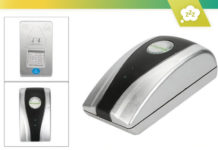


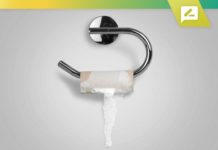






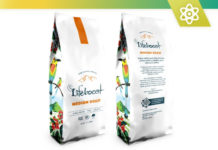

![Bowflex Max Total: 2024 Fitness Workout Exercise Machine [Review] Bowflex Max Total: 2020 Equipment Review For Complete Upper and Lower Body Workout](https://www.advancedliving.com/wp-content/uploads/2019/12/Bowflex-Max-Total-218x150.jpg)
